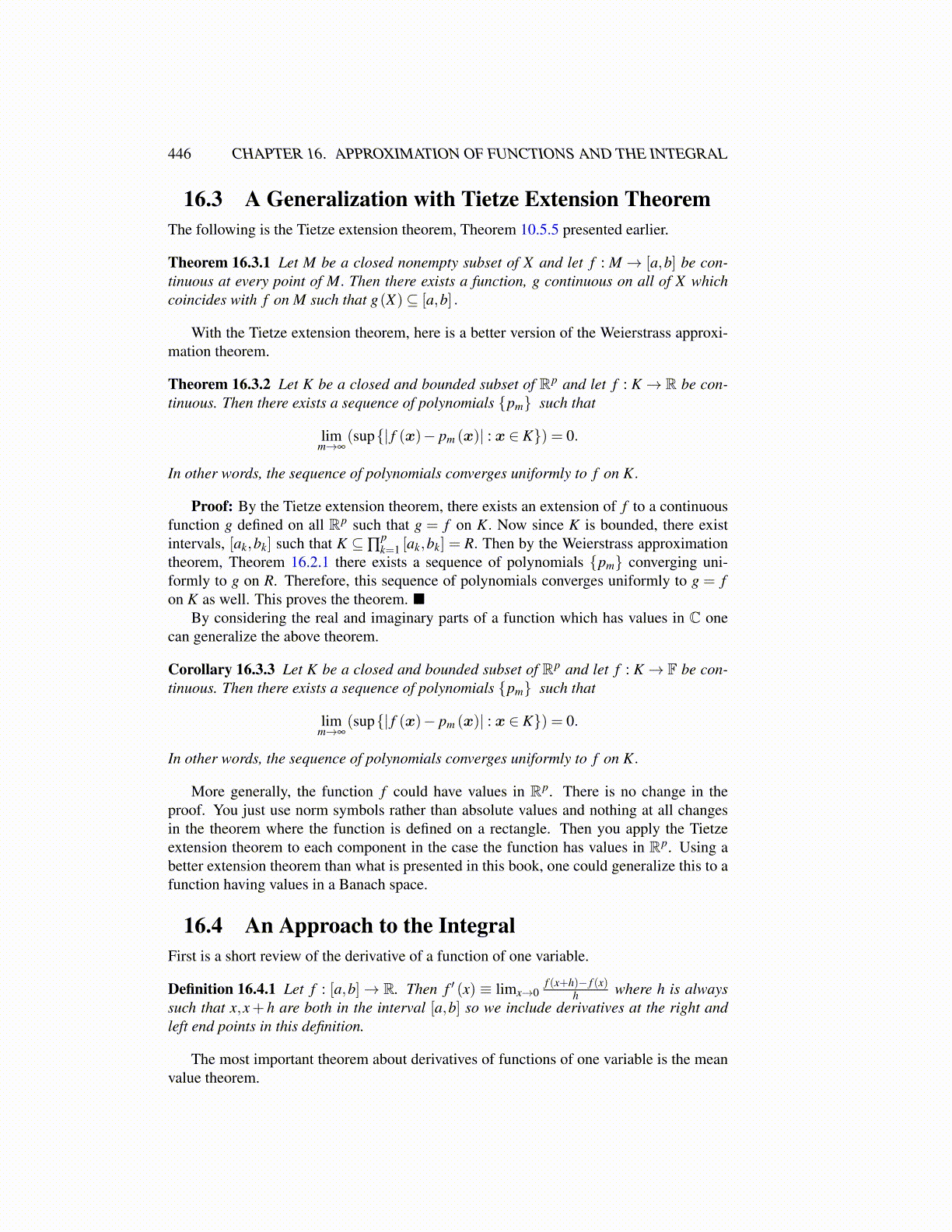
446 CHAPTER 16. APPROXIMATION OF FUNCTIONS AND THE INTEGRAL
16.3 A Generalization with Tietze Extension TheoremThe following is the Tietze extension theorem, Theorem 10.5.5 presented earlier.
Theorem 16.3.1 Let M be a closed nonempty subset of X and let f : M→ [a,b] be con-tinuous at every point of M. Then there exists a function, g continuous on all of X whichcoincides with f on M such that g(X)⊆ [a,b] .
With the Tietze extension theorem, here is a better version of the Weierstrass approxi-mation theorem.
Theorem 16.3.2 Let K be a closed and bounded subset of Rp and let f : K → R be con-tinuous. Then there exists a sequence of polynomials {pm} such that
limm→∞
(sup{| f (x)− pm (x)| : x ∈ K}) = 0.
In other words, the sequence of polynomials converges uniformly to f on K.
Proof: By the Tietze extension theorem, there exists an extension of f to a continuousfunction g defined on all Rp such that g = f on K. Now since K is bounded, there existintervals, [ak,bk] such that K ⊆∏
pk=1 [ak,bk] = R. Then by the Weierstrass approximation
theorem, Theorem 16.2.1 there exists a sequence of polynomials {pm} converging uni-formly to g on R. Therefore, this sequence of polynomials converges uniformly to g = fon K as well. This proves the theorem. ■
By considering the real and imaginary parts of a function which has values in C onecan generalize the above theorem.
Corollary 16.3.3 Let K be a closed and bounded subset of Rp and let f : K→ F be con-tinuous. Then there exists a sequence of polynomials {pm} such that
limm→∞
(sup{| f (x)− pm (x)| : x ∈ K}) = 0.
In other words, the sequence of polynomials converges uniformly to f on K.
More generally, the function f could have values in Rp. There is no change in theproof. You just use norm symbols rather than absolute values and nothing at all changesin the theorem where the function is defined on a rectangle. Then you apply the Tietzeextension theorem to each component in the case the function has values in Rp. Using abetter extension theorem than what is presented in this book, one could generalize this to afunction having values in a Banach space.
16.4 An Approach to the IntegralFirst is a short review of the derivative of a function of one variable.
Definition 16.4.1 Let f : [a,b]→ R. Then f ′ (x) ≡ limx→0f (x+h)− f (x)
h where h is alwayssuch that x,x+ h are both in the interval [a,b] so we include derivatives at the right andleft end points in this definition.
The most important theorem about derivatives of functions of one variable is the meanvalue theorem.